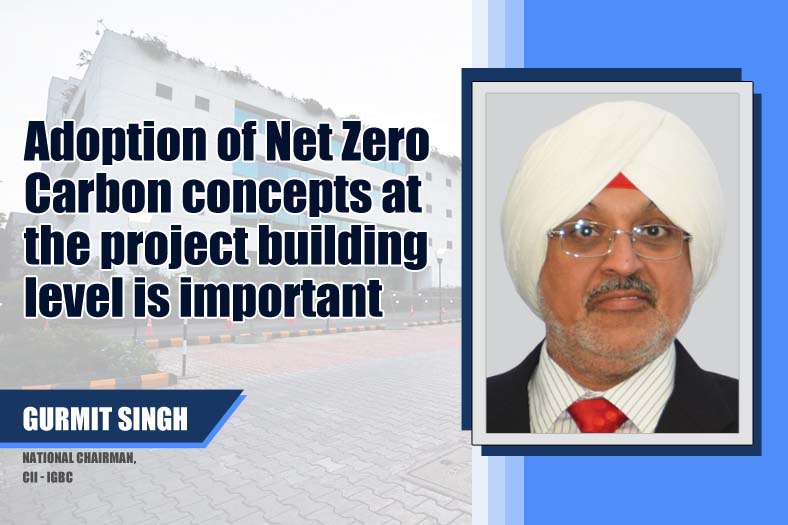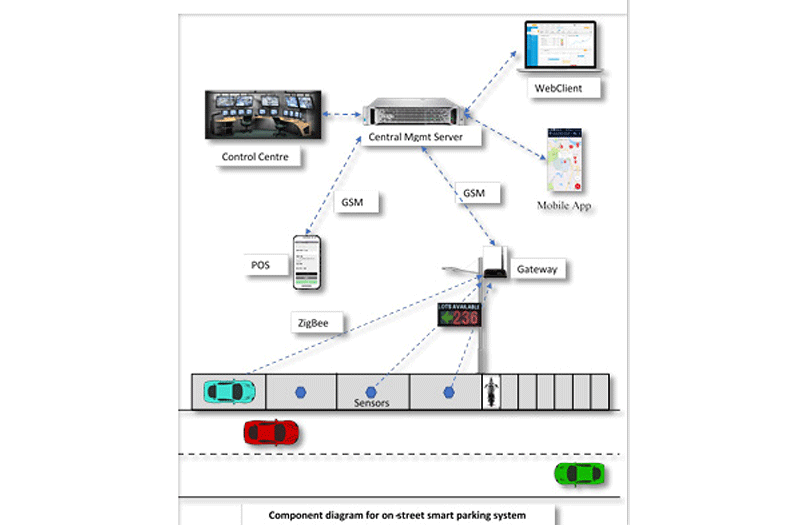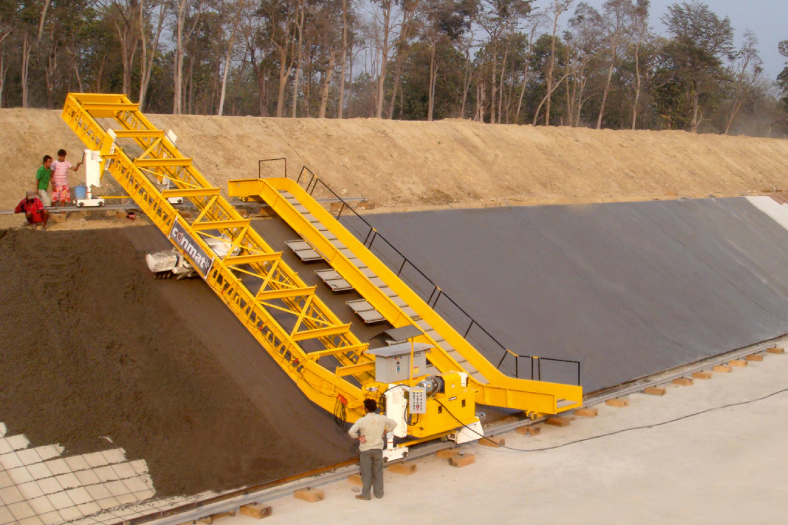Smart cities are creation of smart citizens

Mala Singh, Chairperson & MD, PEC Greening India explains how smart citizens can create smart cities.
Smart city for the developing country like India is an engine of growth for the economy. According to census 2011 data nearly 31 per cent of India’s current population lives in urban areas and contributes 63 per cent of India’s GDP. With increasing urbanisation, urban areas are expected to house 40 per cent of India’s population and contribute 75 per cent of India’s GDP by 2030. This requires comprehensive development of physical, institutional, social and economic infrastructure which are important to improve the quality of life and attracting investment to the cities and setting in motion a virtuous cycle of growth and development. Development of smart cities is a step in that direction. Exactly what is a smart city in India? There is no universal definition of a smart city. It means different things to different people. The conceptualisation of smart city, therefore, varies from city to city and country to country.
The cities we live in today are extremely chaotic, disordered and are spreading at an uncontrolled and unsustainable rate. Smart cities are basically seeking to change these practices. A smart city would ideally have adequate water supply, adequate power supply, sanitation, health and education facilities, adequate public transport services, affordable housing, digital connectivity, good governance, safety and security but above all the development should be green and sustainable to control the disarray growing of cities.
The core objective of smart city mission is to encourage cities that provide core infrastructure and give quality life to its citizens, and also a sustainable environment with the application of ‘Smart’ solutions. The emphasis is on total sustainable development and to target the compact areas, creates replicable models, which will act like a lighthouse to other aspiring cities. This is a very bold initiative by the government. It is meant to set illustrations that can be implemented both within and outside the smart city level, catalysing the establishment of similar smart cities in the entire country.
In my opinion, we are certainly in a new era of smart city development. In the process participation of citizens to develop smart cities is increasing and more cities are adopting this philosophy. Public-Private Partnership (PPP) model is the new dimension and playing an important core role. It is definitely a great moment for the Indian cities to embrace the concept, where we have a fast-growing urban population combined with a huge infrastructure challenges. Also, India has all the elements and resources to achieve the smart cities mission.
At the same time, process of developing smart cities puts a great challenge and pressure on the resources and environment of our mother Earth. Any new development brings new problems with it and smart cities are no exception. It also puts great impact on environment as follows:
• Increase in the number of vehicles will cause levels of particulate emission.
• Carbon emission increases with growing urban population.
• Depletion of water bodies with increasing land reclaimanation.
• Impact on natural resources to meet the demand of construction.
To overcome this challenges we not only need policies and framework made by government to tackle this challenges but we actually need citizen participation and working of consultants from the grass root level. We have to start thinking from the micro level. Imagine a well-developed city with all the infrastructure (including commercial, residential, transportation facilities, factories, industries etc.), internet connectivity, mobility, safety and security. But looking from the top we see only concrete jungle where buildings look beautiful and fast moving lights on roads gives immense pleasure to the photographers whereas as a green consultant I miss the greenery all round. What if we start thinking of green roof, vertical gardens and bio gardens on all the existing as well as new constructions to improve urban bio diversity and to reduce heat island effect? What if we start thinking of using renewable energy to support solar roof top policy of our country? What if we conserve our water bodies, trees etc, and design the city which will retain the natural topography? What if we all start to manage our household and commercial waste effectively? Will not it make our cities really smart and greener? Involvement of all stakeholders together and their responsible behaviour will really make the difference to transform our existing built environment into green and smarter, basically we need responsibility among all the citizens. Rather I would say smart cities are creation of smart citizens. These behaviour changes can eventually generate economic and environmental benefits, such as cutting resource usages (energy, water and materials), saving on energy bills and eventually reducing carbon dioxide emissions to mitigate climate change impacts.
Awareness about smart solutions plays crucial role in developing true smart citizens. Though the local authorities of our smart cities will make substantial investments in smart solutions, they cannot skip on efforts to raise citizen awareness on the efficient usage of these solutions and services. For example, energy savings cannot be achieved merely with smart meters in a home. In order to reduce energy consumption and save money on bills, consumers need not to only monitor their energy use but also make an effort to change the whole family’s daily energy usage behaviour. This would include shifting to energy-efficient appliances, reducing TV time, and switching off electrical appliances when not in use, especially during peak periods. The most vital aspect — the citizens who live and work in these cities — must be integral to the implementation process as well. The success of the Mission is firmly vested in smart citizens.
According to the India’s Urban Development Minister 98 cities which would be developed into smart cities by providing core infrastructure needed to enhance urban living. Indian government smart city mission has taken following into consideration like city improvement (retrofitting), city renewal (redevelopment) and city extension (greenfield development) as strategic components of area-based development. Even when an urban planner designs the retrofitting plan/redevelopment plan of a city the focus remains, on addressing the requirements pertaining to adequate water supply, assured electricity supply, sanitation, including solid waste management, efficient urban mobility and public transport along with affordable housing. The process of retrofitting and redevelopment provides an opportunity to the micro, small and medium entrepreneurs to grow their business.
To work on this mission all the stakeholders should work together to identify ‘The Pivot model’ of their city, as it is the core economic activity of the city, makes business sense and affects multiple livelihoods in a city. All infrastructure up-gradation, skill development programs, institutional set up should therefore converge to support the pivot of the city.
The crucial matrices in a smart city would include:
• Stakeholder engagement
• Adequate water supply
• Assured electricity supply
• Sanitation, including solid waste management
• Efficient urban mobility and public transport
• Affordable housing, especially for the poor
• Robust IT connectivity and digitalisation
• Good governance, especially e-governance and citizen participation
• Sustainable environment
• Safety and security of citizens, particularly women, children and the elderly, and,
• Health and education.
Every ingredient of smart city gives opportunity to construction companies to grow their business. Government is thinking to implement PPP model to build smart cities which again provide opportunity to the construction companies to go into large amount of investment and generate revenue of it. Foreign direct investments for smart cities also bringing up opportunity to provide business to the construction sector and local contractors to make money. Every smart city will be developed depending on its needs hence every city model will have to be designed in different manner which is an opportunity to the design consultants, architects, green consultants, contractors etc, to build business.
A smart city connects people with their environment and city to create more efficient and optimal relationships between available resources, technology, community services, and events in the urban fabric. This connection is a tool that links the implementation of the smart city and the proposed technology.
Authored by_
Mala Singh,
Chairperson & MD,
PEC Greening India
Cookie Consent
We use cookies to personalize your experience. By continuing to visit this website you agree to our Terms & Conditions, Privacy Policy and Cookie Policy.









